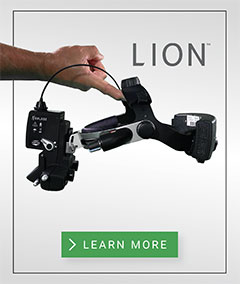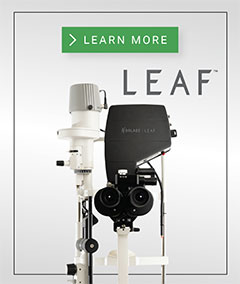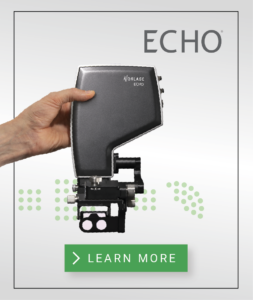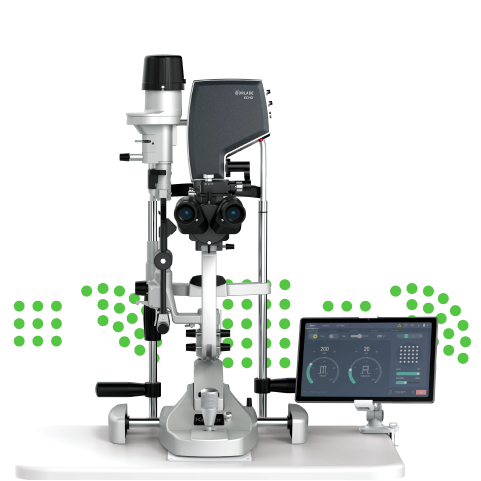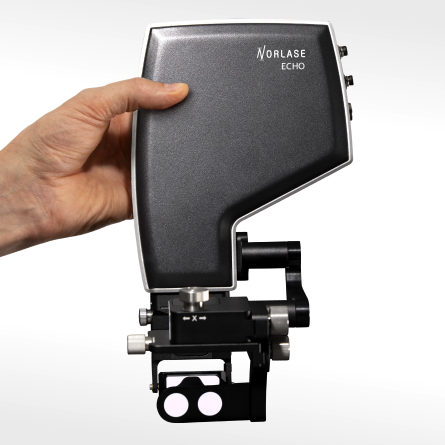Learn about Laser Photocoagulation, its effectiveness and risks, and the recovery process, then discover how our green laser photocoagulator LION benefitted Dr. Javed Sayed of New Vision Eye Center.
What is Laser Photocoagulation?
Laser photocoagulation is eye surgery utilizing heat from a laser to shrink or destroy abnormal blood vessels in the retina. Through the intentional formation of scar tissue, the laser device can be used to seal off leaking blood vessels, improve retinal oxygen levels, and treat retinal tears and detachment. The devices are commonly used by specialists in treating conditions of diabetic retinopathy and age-related macular degeneration (AMD), including retinal tears, macular edema and retinal vein occlusion. Lasers also have been used in the treatment of glaucoma.
Use of laser photocoagulation can help prevent the worsening of retinal disorders and reduce the patient’s risk of experiencing future vision loss, but it cannot restore vision that has already been lost.
Is laser photocoagulation safe?
Laser photocoagulation is both safe and effective in the treatment of retina and glaucoma disorders. The eye is first numbed with special eye drops or other form of local anaesthesia, and the pupil is dilated. The laser then generates intentional, small areas of scar tissue to prevent abnormal blood vessels from leaking into the retina. Slight pin prick sensations during the procedure are common, along with increased sensitivity, blurriness, and/or mild soreness following the treatment, though patients will typically not experience higher levels of pain or discomfort.
Benefits and Risks
Use of laser photocoagulation is highly effective in preventing future vision loss. The procedure typically lasts only 15-20 minutes, and does not require an overnight stay in a hospital.
However, laser photocoagulation is not completely without risks. As the procedure involves deliberate thermal destruction of retinal tissue, damage to light-sensitive nerve cells will result in some loss of central vision in order to prevent the progression of a retinal disorder. Accidental laser burns or bleeding in the eye are also risks of laser photocoagulation, and can result in more severe vision loss.
What is the recovery process like?
As the pupil can remain dilated for a few hours after the procedure is performed, the patient should not drive themselves home from their doctor’s clinic. Some soreness and blurry vision may also occur in the days following the procedure. However, the patient is safe to resume activities immediately following their laser photocoagulation treatment, though strenuous activity is highly discouraged. Should any significant changes in vision occur, the patient should immediately contact their doctor.
Laser Photocoagulator Treatment: Efficiency and Portability for Ophthalmologists
With the introduction of LION, Norlase has provided doctors with a revolutionary green laser photocoagulator that increases the efficiency of retinal laser treatments. For Dr. Javed Sayed of New Vision Eye Center, LION is “really a game changer.” LION’s green laser is used to treat retinal and glaucoma disease by selectively targeting ocular tissue, resulting in a therapeutic response to the laser treatment. Specializing in glaucoma and cataract surgery, Dr. Sayed has experienced firsthand the benefits that LION brings to his office and his patients, with its portability being a standout feature. Unlike most laser photocoagulation systems, the engineers embedded an ultra-light laser source directly into the headset. As a result, LION eliminates the need for an external laser console, and the green laser and LIO are fully-integrated into a single ultra-compact device.
ABOUT LION
“We don’t have to have a dedicated laser room, which really speeds things up for me,” says Dr. Sayed. “And it’s really portable, so it’s really easy for me to take [from] office to office, which is good. When some of the older attendings would switch offices, some of our offices just didn’t have a laser and they wouldn’t bring one with them. And so for their patients, they have to send them further away when they did need lasers. So this has been really nice, not just for me, but for our patients in general.”
Voice recognition technology has also helped Dr. Sayed speed up the flow of the clinic: “Before I would always have a technician in the room with me. But now I can just go in and do the laser by myself because I’m able to adjust the settings. While I’m doing a laser, my scribe or my other technicians can be working up other patients and just helps the throughput. And there’s one less person in the room that you have to worry about laser scatter for.”
With its groundbreaking green laser technology and wireless interface, LION’s ease of use isn’t limited to its portability. Formerly an Assistant Professor of Ophthalmology at Bascom Palmer Eye Institute, Dr. Sayed has found educating colleagues in the use of LION to be a highly efficient process thanks to its user-friendly tablet interface. “It’s just a simple plug and if you can use your iPhone or your smartphone, you can use the tablet. It’s just a very easy display and it’s a very easy setup. It was very quick to learn and the technicians all picked it up right away too. There wasn’t a big teaching lag,” he explains. “Sometimes we worry about that with new equipment. But it was easy and I think they made it very intuitive.”
LION’s fiberless, untethered system not only cuts down on costly breakages, but its pricing point has proved an important feature all on its own. “I think the beauty of it is just that they’ve managed to miniaturize it,” Dr. Sayed says. “They managed to bring the costs down, but still have a piece of equipment that works extremely well as any other laser that we’ve tried before.”
Visit Norlase to learn how we are changing the way doctors treat. Explore other interesting topics on our blog.
Learn about Laser Photocoagulation, its effectiveness and risks, and the recovery process, then discover how our green laser photocoagulator LION benefitted Dr. Javed Sayed of New Vision Eye Center.
What is Laser Photocoagulation?
Laser photocoagulation is eye surgery utilizing heat from a laser to shrink or destroy abnormal blood vessels in the retina. Through the intentional formation of scar tissue, the laser device can be used to seal off leaking blood vessels, improve retinal oxygen levels, and treat retinal tears and detachment. The devices are commonly used by specialists in treating conditions of diabetic retinopathy and age-related macular degeneration (AMD), including retinal tears, macular edema and retinal vein occlusion. Lasers also have been used in the treatment of glaucoma.
Use of laser photocoagulation can help prevent the worsening of retinal disorders and reduce the patient’s risk of experiencing future vision loss, but it cannot restore vision that has already been lost.
Is laser photocoagulation safe?
Laser photocoagulation is both safe and effective in the treatment of retina and glaucoma disorders. The eye is first numbed with special eye drops or other form of local anaesthesia, and the pupil is dilated. The laser then generates intentional, small areas of scar tissue to prevent abnormal blood vessels from leaking into the retina. Slight pin prick sensations during the procedure are common, along with increased sensitivity, blurriness, and/or mild soreness following the treatment, though patients will typically not experience higher levels of pain or discomfort.
Benefits and Risks
Use of laser photocoagulation is highly effective in preventing future vision loss. The procedure typically lasts only 15-20 minutes, and does not require an overnight stay in a hospital.
However, laser photocoagulation is not completely without risks. As the procedure involves deliberate thermal destruction of retinal tissue, damage to light-sensitive nerve cells will result in some loss of central vision in order to prevent the progression of a retinal disorder. Accidental laser burns or bleeding in the eye are also risks of laser photocoagulation, and can result in more severe vision loss.
What is the recovery process like?
As the pupil can remain dilated for a few hours after the procedure is performed, the patient should not drive themselves home from their doctor’s clinic. Some soreness and blurry vision may also occur in the days following the procedure. However, the patient is safe to resume activities immediately following their laser photocoagulation treatment, though strenuous activity is highly discouraged. Should any significant changes in vision occur, the patient should immediately contact their doctor.
Laser Photocoagulator Treatment: Efficiency and Portability for Ophthalmologists
With the introduction of LION, Norlase has provided doctors with a revolutionary green laser photocoagulator that increases the efficiency of retinal laser treatments. For Dr. Javed Sayed of New Vision Eye Center, LION is “really a game changer.” LION’s green laser is used to treat retinal and glaucoma disease by selectively targeting ocular tissue, resulting in a therapeutic response to the laser treatment. Specializing in glaucoma and cataract surgery, Dr. Sayed has experienced firsthand the benefits that LION brings to his office and his patients, with its portability being a standout feature. Unlike most laser photocoagulation systems, the engineers embedded an ultra-light laser source directly into the headset. As a result, LION eliminates the need for an external laser console, and the green laser and LIO are fully-integrated into a single ultra-compact device.
ABOUT LION
“We don’t have to have a dedicated laser room, which really speeds things up for me,” says Dr. Sayed. “And it’s really portable, so it’s really easy for me to take [from] office to office, which is good. When some of the older attendings would switch offices, some of our offices just didn’t have a laser and they wouldn’t bring one with them. And so for their patients, they have to send them further away when they did need lasers. So this has been really nice, not just for me, but for our patients in general.”
Voice recognition technology has also helped Dr. Sayed speed up the flow of the clinic: “Before I would always have a technician in the room with me. But now I can just go in and do the laser by myself because I’m able to adjust the settings. While I’m doing a laser, my scribe or my other technicians can be working up other patients and just helps the throughput. And there’s one less person in the room that you have to worry about laser scatter for.”
With its groundbreaking green laser technology and wireless interface, LION’s ease of use isn’t limited to its portability. Formerly an Assistant Professor of Ophthalmology at Bascom Palmer Eye Institute, Dr. Sayed has found educating colleagues in the use of LION to be a highly efficient process thanks to its user-friendly tablet interface. “It’s just a simple plug and if you can use your iPhone or your smartphone, you can use the tablet. It’s just a very easy display and it’s a very easy setup. It was very quick to learn and the technicians all picked it up right away too. There wasn’t a big teaching lag,” he explains. “Sometimes we worry about that with new equipment. But it was easy and I think they made it very intuitive.”
LION’s fiberless, untethered system not only cuts down on costly breakages, but its pricing point has proved an important feature all on its own. “I think the beauty of it is just that they’ve managed to miniaturize it,” Dr. Sayed says. “They managed to bring the costs down, but still have a piece of equipment that works extremely well as any other laser that we’ve tried before.”
Visit Norlase to learn how we are changing the way doctors treat. Explore other interesting topics on our blog.
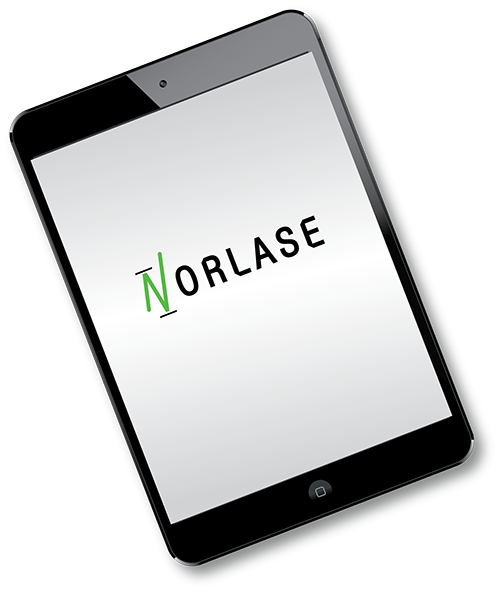
INTERESTED IN GETTING A DEMO?
Let us know how we can help!
INTERESTED IN GETTING A DEMO?
Let us know how we can help!

